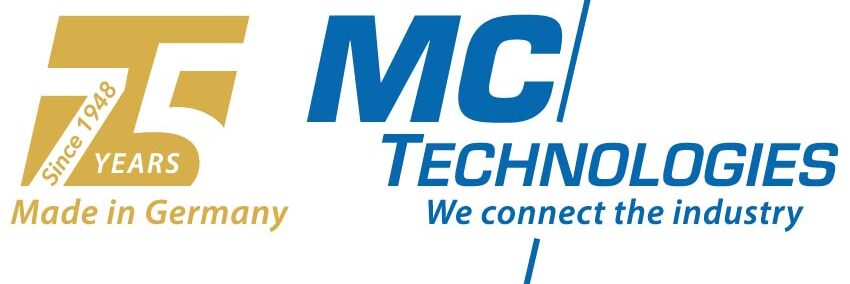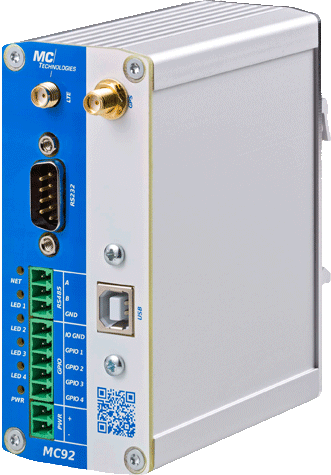Intelligent traffic control: efficient and sustainable
Before the introduction of traffic light systems, traffic police officers regulated the flow of traffic from towers or pulpits, thus ensuring traffic safety in cities. But over time, not only cities and towns grew, but also traffic. In addition to an increasing number of road users such as pedestrians and bicyclists, increased automobile traffic in particular plays a significant role. In this context, in addition to the aspect of general safety, the management of traffic flows in cities and on highways in particular is a constant challenge that can only be mastered with the help of modern technology.
Nowadays, the regulation of road traffic takes place only in exceptional cases by hand signals of police officers. Instead, modern infrastructure is characterized by intelligent transport systems, thanks to which real-time mobility monitoring and proactive traffic control are possible by means of artificial intelligence and IoT.
Find out here how you can use our products to obtain information and data from the traffic infrastructure and thus contribute to more efficient and sustainable traffic control in the future.

Increased traffic volume has some negative effects: More traffic jams occur, accidents accumulate and the slow-moving traffic of vehicles produces many exhaust gases that pollute the air. Drivers are irritated due to unpredictable high traffic volumes, and residents complain about the noise and environmental impact of vehicles. In addition, there is a lack of on-site lines that could be used to transmit traffic data and solve the corresponding mobility problems. Local public transport (LPT) is also an attractive application area for intelligent traffic control. It is not uncommon for bus services, for example, to experience delays and cancellations, which, moreover, cannot be communicated to road users in good time.
Many public transport stops in Germany are not yet adequately equipped with passenger information systems. A passenger who wants to take a bus at such a stop, for example, has to rely on the posted timetables on site. Without a transport company app or a digital information system, passengers will not receive any information in the event of a disruption. A delay or failure on the line then only becomes noticeable through unpleasant, long waiting times, resulting in passenger frustration.
Modern LTE modems are ideal for passenger information systems, as no cost-intensive earthworks are required for DSL connections, so bus stops can also be retrofitted. The information displays inform passengers in good time about possible disruptions so that they can better estimate the remaining waiting time thanks to the real-time displays. The dynamic passenger information systems are reliable and can react flexibly to changing traffic conditions and, for example, also play out special instructions. In this way, they ideally contribute to increased passenger satisfaction.


In many cities, traffic drags tenaciously through the streets. A wave of red traffic lights then causes the barrel to overflow, so that one vehicle follows the next. The existing infrastructures are not designed to handle this now very high volume of traffic, so all the traffic seems to be bursting at the seams. The consequence: high pollution levels due to increased congestion, an increased risk of accidents for all road users involved, as well as stress and dissatisfaction among drivers.
The solution is obvious: digitalization has long since arrived in road traffic and is the key to regulated traffic control that benefits everyone. Intelligent traffic control systems are able to monitor roads and vehicles in real time and collect important data. In traffic monitoring, for example, you can set up speed measurement systems, distance measurements or systems for recording traffic density. For example, intelligent traffic lights equipped with sensors can be used to optimize the overall flow of traffic on the roads. Targeted traffic management makes it possible to avoid traffic jams altogether in some cases and to make intelligent predictions for road traffic. Modern LTE technology combined with encrypted data transmission enable protected networking of existing traffic monitoring systems with intelligent systems.
Our mobile multifunctional platform
MC100
is ideally suited for use in public transport. For example, the devices enable data transmission of various traffic information such as departure times, disruptions or notices of current impairments due to road works. This data can be easily transferred to the corresponding digital passenger information displays at bus and train stops, so that passengers are always informed about the current traffic situation in the city.
Our solutions for intelligent traffic planning can be programmed to transmit announcements in the form of audio files via mobile communications. This makes it easier, especially for passengers who are limited due to visual impairments or illiteracy, to participate in public transport. Thanks to the LTE connection civil works for DSL lines are required at the passenger stops. This delivers a significant time and cost saving in comparison to wired communications systems.
 With the MC100 series devices, you are also able to generate simple, flexible and programmable control of traffic control systems such as traffic lights, barriers or access systems. LTE technology can be used both stationary away from DSL connections and temporary, e.g. at construction sites or mobile traffic jam warning systems, so that you can react flexibly and promptly to any new traffic situation thanks to up-to-date data. The MC100 and
With the MC100 series devices, you are also able to generate simple, flexible and programmable control of traffic control systems such as traffic lights, barriers or access systems. LTE technology can be used both stationary away from DSL connections and temporary, e.g. at construction sites or mobile traffic jam warning systems, so that you can react flexibly and promptly to any new traffic situation thanks to up-to-date data. The MC100 and
MC92
are suitable for fast and secure data transmission, for example in speed monitoring or traffic counting. Depending on the sensor system, a modem can also indicate malfunctions in operation such as vandalism.
MC Technologies - Your provider for traffic control via mobile radio
Efficient and sustainable traffic management offers great benefits for all stakeholders. With our devices, you can exploit the full potential of smart traffic management and contribute to smoother and more attractive traffic flow and safer mobility in cities.
As one of the leading European manufacturers in machine-to-machine (M2M) communication, we offer you the right solution for your individual requirements. Our flexibly deployable modems enable you, for example, to network new or existing stops with modern LTE technology and save the cost of more expensive DSL connections.
In the area of traffic monitoring and control, our products also provide you with a reliable smart traffic solution that will contribute to safer and more efficient mobility on the roads in the future. We will be happy to advise you in detail and assist you in selecting the right equipment from our wide range of products. Simply contact us via our contact form, so that we can promptly take care of your request
Do you have any questions? Feel free to contact us.
Talk to us: We have both the expertise and the products and solutions.





